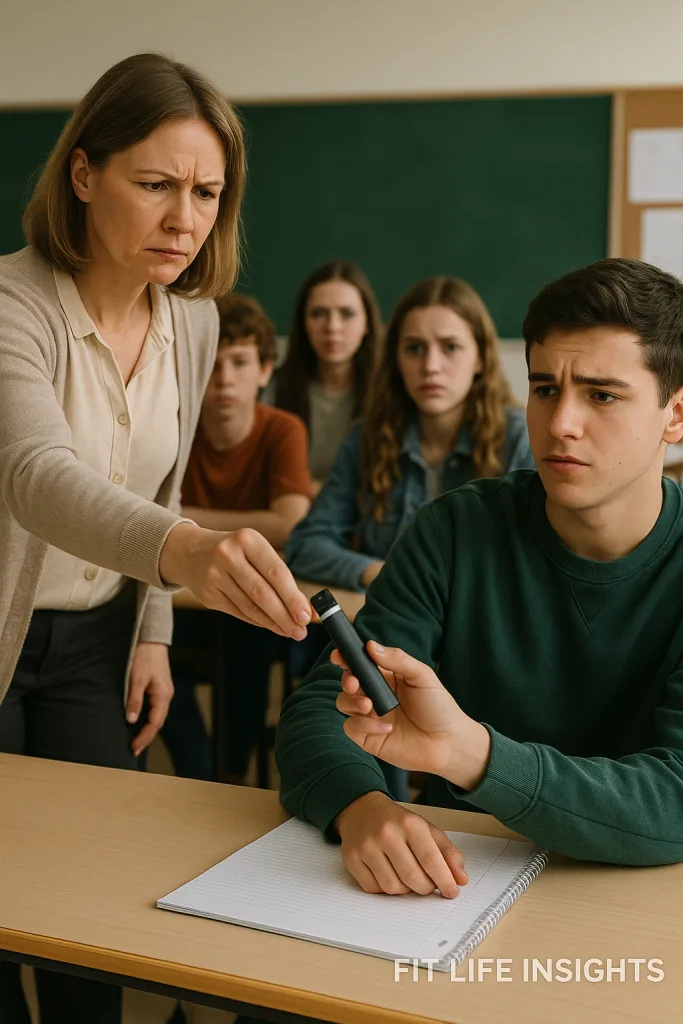Introduction
Welcome to our exploration of how visual perceptions shape your memory. Have you ever marveled at how a single glance can etch an image into your mind for years to come? That’s the magic of visual perception at work.
In this article, we’ll delve into the seven powerful ways in which visual perceptions influences the way we remember things, uncovering the complex mechanisms that govern this phenomenon.
What is Visual Perception?
Visual perception refers to the brain’s capacity to interpret visual stimuli perceived by the eyes. It differs from visual acuity, which measures the clarity of vision. An individual may possess 20/20 vision, and yet encounter challenges with visual perceptual processing.
When visual information is perceived, our brains engage in processing and interpreting the sensory input, forming a mental representation of an image or object. This representation is then stored in memory, enabling us to recall and recognize the image or object in the future.
Understanding Visual Perception and Memory
Before we embark on the journey, let’s lay the foundation by understanding what visual perception and memory entail. Visual perception refers to the brain’s ability to interpret and make sense of visual stimuli, while memory involves the process of encoding, storing, and retrieving information.
Together, these cognitive functions form the cornerstone of our perception of the world and our ability to remember past experiences.
The Link Between Visual Perception and Memory
Visual perception and memory are exquisitely intertwined facets of human cognition, harmoniously collaborating to construct our perceptual reality and encode our life experiences. At the crux of this relationship, lies the phenomenon of sensory input being seamlessly integrated into the fabric of memory formation.
When our visual system processes external stimuli, a cascade of neural activity ensues, culminating in the reaction of vivid mental representations that are indelibly etched into our memory banks.
The symbolic alliance between visual perception and memory is exemplified by the concept of encoding, a fundamental process whereby sensory information is transformed into a format conducive to storage in long-term memory. Visual stimuli that capture our attention are more likely to undergo elaborate encoding processes, resulting in robust memory traces that endure the test of time.
Therefore, the act of perceiving and and attending to visual cues not only shapes our immediate perceptual experience but also lays the groundwork for enduring memories that enrich our cognitive landscape.
The Problems Associated with Visual Perception
Despite its remarkable capabilities, visual perception is susceptible to an array of challenges and melodies that can impede its efficacy and compromise perceptual integrity. Chief among these challenges is the phenomenon of sensory overload, wherein an excessive influx of visual stimuli overwhelms the brain’s capacity to process information effectively.
This sensory barrage can lead to cognitive fatigue, diminished attentional resources, and perceptual distortions that undermine the accuracy of visual perception. Furthermore, visual perception can be susceptible to various perceptual illusions and biases that distort our perception of reality.
From the Muller-Lyer illusion to Ponzo illusion, these perceptual distortions highlight the delicate interplay between sensory input and cognitive interpretation, illustrating how our brains construct subjective realities based on contextual cues and prior experiences.
Additionally, individuals may experience deficits in visual processing stemming from neurological conditions such as visual agnosia or prosopagnosia, which impair the ability to recognize objects or faces, respectively.
These perceptual impairments not only pose practical challenges in daily life but also underscore the indispensable role of intact visual perception in navigating the complexities of the external world.
Signs and Symptoms of Visual Perception
Recognizing the signs and symptoms of impaired visual perception is crucial for early detection and intervention, ensuring optimal functioning and quality of life. Common indicators of visual perceptual difficulties may manifest across various territories, encompassing both perceptual and cognitive domains.
In the perceptual realm, individuals may exhibit deficits in visual discrimination, characterized by difficulties distinguishing between similar stimuli or perceiving subtle differences in visual patterns. Moreover, challenges in visual spatial processing may manifest as difficulties in navigating spatial environments, organizing visual information, or interpreting spatial relationships.
Cognitive manifestations of visual perception deficits may include impaired visual memory, hindered object recognition, or compromised visual attention. Individuals may struggle to retain visual information over time, recognize familiar objects or faces, or sustain attention during visually demanding tasks.
Furthermore, perceptual disturbances such as visual hallucinations or illusions may signify underlying neurological conditions warranting further evaluation by a healthcare professional.
The 7 Powerful Ways Visual Perceptions Shape Your Memory
Here’s a list of 7 most powerful ways in which visual perceptions shape your memory:
- Attentional Focus
At the heart of visual perception lies attentional focus – the selective allocation of cognitive resources to specific aspects of our visual environment. When we focus our attention on an object or scene, we increase the likelihood of encoding it into our memory. Conversely, distractions can disrupt this process, leading to lapses in memory formation.
- Emotional Silence
Emotions have a profound impact on your memory, amplifying the salience of certain stimuli and imprinting them more deeply into our consciousness. Visual perception plays a crucial role in this process by capturing emotionally charged scenes or images with heightened clarity and vividness.
Whether it’s a joyful moment captured in a photograph or a traumatic event etched into our minds, emotional experiences leave an indelible mark on our memory landscape.
- Contextual Encoding
Visual perception doesn’t occur in isolation; it operates within the broader context of our environment. Contextual cues provide vital clues that help us encode and retrieve memories more effectively.
By harnessing the power of context, we can enhance our memory recall and reconstruct past events with greater accuracy.
- Visual Imagery
The mind’s eye is a canvas where visual perception and memory converge to create vivid mental representations of our experiences. Visual imagery involves mentally reconstructing images or scenes based on stored memories or imagined scenarios.
By tapping into our visual imagination, we can enhance memory retention and strengthen the neural connections associated with specific stimuli. From picturing a cherished childhood memory to envisioning future goals, visual imagery enriches our cognitive landscape.
- Mnemonic Devices
Mnemonic devices are clever strategies that leverage visual and auditory cues to aid memory recall. These memory aids capitalize on the brain’s natural affinity for pattern recognition and association.
Techniques such as acronyms, imagery, and the method of loci harness the power of visual perception to encode information in a more memorable format. By incorporating mnemonic devices into our learning repertoire, we can enhance our memory retention and streamline the retrieval process.
- Attention Capture
While attentional focus is essential for memory formation, it can also be hijacked by attentional capture – the phenomenon where salient stimuli automatically attract our attention, often to the detriment of our cognitive goals.
In a world saturated with sensory stimuli, attentional capture can lead to distractions that disrupt our ability to encode and retrieve information accurately. Understanding the mechanisms of attentional capture can help us mitigate its effects and maintain focus amidst distractions.
- Memory Biases
Our memory is not a flawless record of past events; it is prone to various biases and distortions influenced by our perceptual experiences. From the recency effect to the misinformation effect, these cognitive biases shape our memory in subtle ways, altering our perception of reality.
Visual perception plays a pivotal role in shaping these biases, as our interpretation of visual stimuli can be influenced by factors such as attentional focus, emotional salience, and prior experiences.
Key Facts of Visual Perception and Memory
- Visual perception is the process by which the brain interprets and makes a sense of visual stimuli perceived by the eyes, playing a pivotal role in constructing our perceptual reality.
- Memory and visual perception are closely intertwined, with visual stimuli often serving as potent triggers for memory retrieval and consolidation.
- Encoding, the process by which sensory information is transformed into a format conducive to storage in long-term memory, is heavily influenced by visual perception.
- Visual imagery, the mental visualization of sensor-rich images, enhances memory retention and retrieval by leveraging the mnemonic potency of visual perception.
- Challenges such as sensory overload, perceptual illusions, and neurological deficits can impair visual perception, compromising perceptual accuracy and cognitive functioning.
What Difficulties can Visual Perception Lead to if Left Untreated?
Untreated difficulties with visual perception can potentially lead to a range of adverse consequences across various domains of functioning, encompassing both perceptual and cognitive dimensions. Some of the potential outcomes include:
- Academic and Occupational Challenges: Can impede academic performance and hinder success in occupational settings that rely heavily on visual processing skills.
Individuals may struggle with tasks such as reading, writing, mathematical operations, and spatial reasoning, affecting their ability to effectively engage in learning or work-related activities.
- Social and Interpersonal Impairments: May interfere with social interactions and interpersonal relationships, as individuals may experience challenges in interpreting facial expressions, body language, and social cues.
This can lead to misunderstandings, social isolation, and feelings of frustration or inadequacy in social settings.
- Safety Risks: Can pose safety risks in various contexts, including navigation, driving, and activities of daily living.
Individuals may have difficulty judging distances, perceiving hazards in their environment, or accurately interpreting traffic signals and signs, increasing their risk of accidents or injuries.
- Emotional and Psychological Impact: Can take a toll on individuals’ emotional well-being and psychological health. Feelings of frustration, anxiety, or low self-esteem may arise as individuals struggle to cope with challenges related to visual processing.
Over time, untreated visual perceptual difficulties can contribute to emotional distress, depression, or other mental health issues.
- Educational and Developmental Delays: In children, untreated visual perceptual difficulties can impede developmental milestones and hinder progress in academic and social domains.
Difficulties with reading, writing, and spatial reasoning may result in academic underachievement, learning disabilities, or delays in cognitive and motor development if not addressed promptly.
- Compromised Quality of Life: Can significantly impact individuals’ overall quality of life, limiting their ability to engage fully in everyday activities, pursue educational and career aspirations, and participate in social and recreational pursuits.
Without appropriate intervention and support, individuals may face persistent challenges and barriers that diminish their well-being and overall functioning.
In conclusion, visual perception and memory represent two sides of the same cognitive coin, each delicately shaping and enriching the other. By understanding how visual perceptions shape your memory and remaining vigilant to signs of perceptual difficulties, individuals can harness the transformative power of visual perception to unlock the treasures of memory and navigate the variations of the perceptual landscape with clarity and precision.
How has visual perception impacted your memory? Share your thoughts in the comments below!






